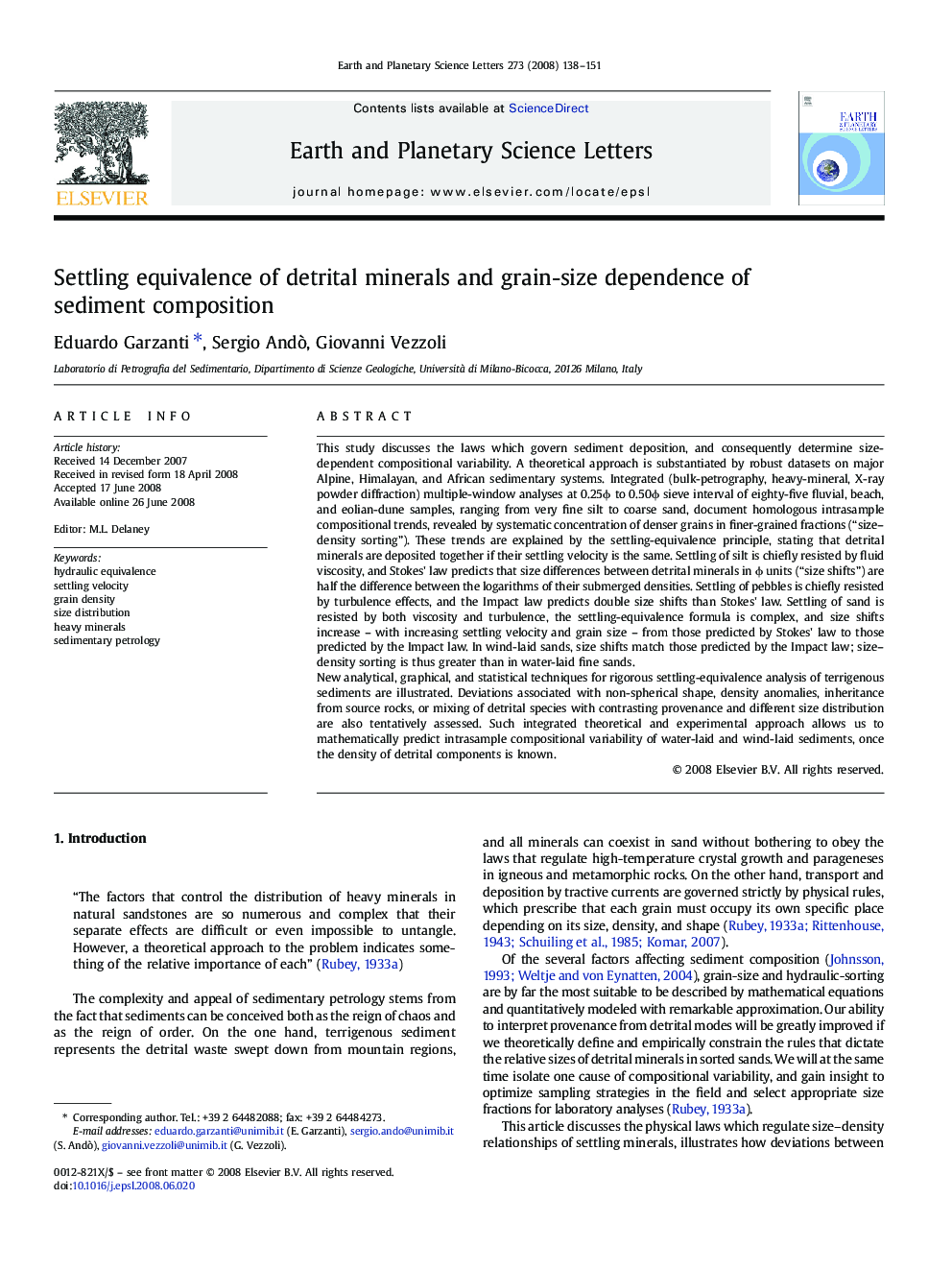| Article ID | Journal | Published Year | Pages | File Type |
|---|---|---|---|---|
| 6431035 | Earth and Planetary Science Letters | 2008 | 14 Pages |
This study discusses the laws which govern sediment deposition, and consequently determine size-dependent compositional variability. A theoretical approach is substantiated by robust datasets on major Alpine, Himalayan, and African sedimentary systems. Integrated (bulk-petrography, heavy-mineral, X-ray powder diffraction) multiple-window analyses at 0.25Ï to 0.50Ï sieve interval of eighty-five fluvial, beach, and eolian-dune samples, ranging from very fine silt to coarse sand, document homologous intrasample compositional trends, revealed by systematic concentration of denser grains in finer-grained fractions (“size-density sorting”). These trends are explained by the settling-equivalence principle, stating that detrital minerals are deposited together if their settling velocity is the same. Settling of silt is chiefly resisted by fluid viscosity, and Stokes' law predicts that size differences between detrital minerals in Ï units (“size shifts”) are half the difference between the logarithms of their submerged densities. Settling of pebbles is chiefly resisted by turbulence effects, and the Impact law predicts double size shifts than Stokes' law. Settling of sand is resisted by both viscosity and turbulence, the settling-equivalence formula is complex, and size shifts increase - with increasing settling velocity and grain size - from those predicted by Stokes' law to those predicted by the Impact law. In wind-laid sands, size shifts match those predicted by the Impact law; size-density sorting is thus greater than in water-laid fine sands.New analytical, graphical, and statistical techniques for rigorous settling-equivalence analysis of terrigenous sediments are illustrated. Deviations associated with non-spherical shape, density anomalies, inheritance from source rocks, or mixing of detrital species with contrasting provenance and different size distribution are also tentatively assessed. Such integrated theoretical and experimental approach allows us to mathematically predict intrasample compositional variability of water-laid and wind-laid sediments, once the density of detrital components is known.
